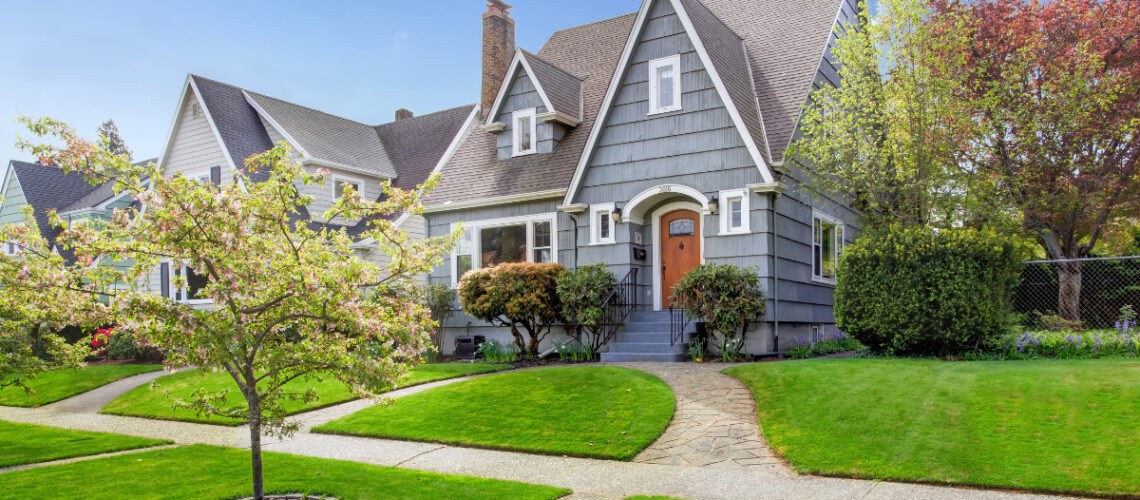In a world increasingly driven by first impressions, the concept of curb appeal has taken center stage in the realm of real estate. It’s a term that has transcended its industry, echoing in conversations among homeowners and even renters. But is it merely a fad, bolstered by HGTV reality shows and Instagram-worthy exteriors, or does curb appeal have tangible, quantifiable benefits? Literature, studies, and real-world examples suggest the latter. It’s not just about making a house pretty—it’s about making it more valuable, and it establishes the property’s character in the neighborhood.
Literary Fascination with First Impressions
Jane Austen’s “Pride and Prejudice” begins with the assertion that “a single man in possession of a good fortune, must be in want of a wife.” This famous opening line underscores society’s fixation on first impressions. Just as Elizabeth Bennet’s initial judgment of Mr. Darcy sets the stage for their intricate relationship, so too does a home’s exterior set expectations for what lies within. Much like literature reflects our innate nature, homes mirror the aspirations and dreams of its inhabitants. The aesthetic allure of a property, from its front porch to its landscaping, paints a vivid picture in the minds of potential buyers and creates a narrative of the lifestyle within its walls.
The Science Behind Curb Appeal
Studies have consistently emphasized the importance of curb appeal. Its impact isn’t merely anecdotal, but backed by solid research and data. For instance, Michigan State University conducted a study revealing that enhancing a home’s landscape can increase its perceived value by 5 to 11%. Those numbers could represent a substantial profit when selling. Another study by the National Association of Realtors found that 63% of homebuyers will drop by after viewing a home they like online. But what prompts this visit? Curb appeal. The photos of a home’s exterior are typically the first things potential buyers see when browsing listings. Their inclination to explore further rests heavily on that initial visual draw.
Real-world Impacts on the Market
Brandon Gilkey, a noted real estate expert, has remarked that a property’s first impression sets the emotional tone for a potential buyer. Even before they step inside, they’ve begun making a decision. And there’s ample evidence supporting this sentiment. Real estate agents often reiterate the importance of investing in the home’s external appearance. Consider Sarah, a homeowner in the upscale Tribeca neighborhood of New York City. She invested $20,000 in landscaping, painting, and revamping the facade of her early 20th-century loft. The result? When she listed the property, she saw a return on investment that was nearly triple her initial expenditure. Her loft, which was once lost in a sea of similar listings, became a standout property, receiving multiple offers above the asking price.
Brandon Gilkey’s observation rings true in Sarah’s case and numerous others. You’re not just selling a property. You’re selling a vision, a lifestyle. And that vision starts the moment someone looks at your property from the street. This isn’t just an industry insider’s perspective, but a sentiment echoed by many homeowners who’ve reaped the benefits of enhanced curb appeal.
Media’s Role in Amplifying the Importance
The media, especially television, has played a pivotal role in magnifying the significance of curb appeal. It shapes our perceptions and influences trends in real estate and home design. Shows like “Curb Appeal” on HGTV focus solely on beautifying a home’s exterior, emphasizing its crucial role in the home selling process. The ripple effect of these programs has influenced homeowners worldwide. Other popular programs, such as “Fixer Upper,” often dedicate a significant portion of their renovation budget to the exterior—proving that no home transformation is truly complete without a revamped facade.
Books, magazines, and online articles also contribute to this narrative. Features on homes with stunning exteriors become viral sensations, often being shared more than those that focus solely on interior design. This media-driven focus reinforces the importance of curb appeal in modern culture and real estate, making it clear that a house’s exterior speaks volumes before its interior even gets a chance.
A Final Word
Curb appeal, in essence, is the promise of potential. It conveys a home’s story, beckoning potential buyers with a taste of what’s inside. When potential buyers approach a property, they’re not just seeing painted walls or manicured lawns. They’re visualizing their future, their potential life in that space. The external allure is a teaser of the life one could lead within those walls. As such, curb appeal becomes more than just an aesthetic consideration—it’s a powerful, persuasive tool that can add immense value to a property.
For homeowners looking to sell, investing in curb appeal is not merely about conforming to societal standards or trends. It’s a strategic move, one backed by data, real-world examples, and the expertise of professionals like Brandon Gilkey. It’s an investment that, more often than not, offers lucrative returns. So, the next time you find yourself debating the importance of that fresh coat of paint or those blooming rose bushes, remember: first impressions last, especially in real estate, and their impact can be felt long after the initial viewing.

